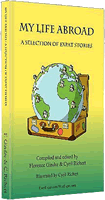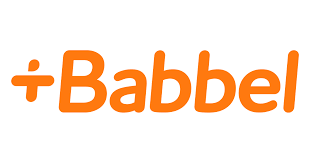Official languages and learning

According to the Maltese Constitution, the national language of Malta is Maltese. Before its independence in 1964 Malta was under British possession. As a result, English and Maltese are the official languages of Malta.
Government business is carried out in English and Maltese. Most Maltese learn English in school, where secondary and tertiary education is provided exclusively in English.
Newspapers in Malta are written in both English and Maltese. Most people in Malta prefer English as their choice of language for reading. Radio stations in Malta are predominantly Maltese and Italian, with few in English. Local television is broadcast mainly in Maltese. However, access to foreign television channels from Italy, the UK, and other European countries is common. Maltese is not commonly used on the Internet.
Before the 1930s, Italian was an official language in Malta. Its use was promoted in conjunction with plans to reunify Malta with Italy. Although Italian has been exchanged for English as the official language, it is still spoken commonly in certain professional workplaces. A large number of Maltese learn Italian through exposure to Italian television, products, and services. Italian also heavily influences the variety of English spoken in Malta in both vocabulary and phonology.
Do I have to learn Maltese?
Almost 100% of the Maltese population speaks Maltese, 88% speak English, 66% speak Italian, and 17% speak French. Thus, expats are not required to learn Maltese to interact with locals in social and professional atmospheres. However, 86% of people in Malta prefer to speak Maltese in daily exchanges, while 12% prefer to use English. Therefore, an effort to learn Maltese is appreciated, and can open professional doors in some sales and marketing jobs.
Learning Maltese
There are various online courses that can assist non-native speakers in learning Maltese. You can also purchase textbooks and CD/book packs at local bookstores, attend Maltese language classes at local council offices, or study towards a certificate in Maltese at the University of Malta or the Malta College of Arts, Science and Technology (MCAST).
Contact your local council for more information about group Maltese lessons. Such lessons are aimed at both foreigners and Maltese looking to improve literacy skills.
Maltese courses at MCAST are generally offered in the evening, at a cost of €100 per 40 hour course. The MCAST campus is located in Paola.
Maltese language courses at the University of Malta are also offered in the evenings, at a cost of €200 per 30 hour course. The University of Malta campus is located in Msida.
About the Maltese Language
Maltese is the only Semitic language of the European Union. Half of the Maltese language is derived from Romance languages, and half from Arabic, with some English and French influences. The Maltese language historically descended from Siculo-Arabic, the Arabic dialect that developed in Sicily during the ninth to twelfth centuries.
The Maltese alphabet is written in a modified Latin script that includes the letters ż, ċ, ġ, ħ, and għ. Stress is generally on the penultimate syllable, unless another syllable is heavy (long vowel or final consonant).
While the Maltese language evolved in the ninth century, a written form of the language was not developed until much later. Under the rule of the Order of the Knights of Malta, French and Italian were used for official documents and correspondence. It was not until the 1930s that a concerted effort was made to transcribe spoken Maltese in a comprehensive written form.
Various localities have accents and dialects divergent from standard Maltese. In daily usage it is also common to combine or switch from Maltese to English, resulting in what is referred to as Maltenglish, Minglish, or Maltingliż.
ESL/EFL in Malta
Malta is one of the most affordable places in the world to learn English. With dozens of language schools conveniently situated throughout the islands, a low cost of living, and hot, sunny weather, it’s not hard to see why the island’s population consists in large part of English as a Second Language (ESL)/English as a Foreign Language (EFL) students.
Typical ESL/EFL program structures include full-immersion programs, in which the student boards with a local family during their studies, short-term crash courses, aimed at improving student’s English language skills within a few weeks, longer certification programs, and IELTS and Cambridge ESOL exam preparation courses. Some ESL/EFL schools also offer study and work programs, through which students participate in internships during their stay. Programs are offered year-round.
Most ESL/EFL schools in Malta offer full boarding and self-boarding options. Program schedules include in-class time, as well as organized social activities, such as boat cruises, beach parties, BBQ’s, historical tours, football matches, and excursions to Gozo, Comino, and Sicily.
Some of the largest ESL/EFL schools in Malta include EC English, Education First (EF) Malta, IELS Malta, Malta Lingua, AM Language Studio, and NSTS English Language Institute. The University of Malta also offers an ESL/EFL program through the Malta University Language School. Some of the most popular areas to study ESL/EFL in Malta are Sliema, St. Julian’s, and Paceville.
While most language schools in Malta cater to young adults, programs are offered for older age brackets (30+, 50+) and those who want to learn English for a business environment. Class structures and social activities in such programs are organized accordingly.
Prices range from €100- €2265 per week, excluding accommodation. Accommodation organized through language schools starts at €100 per week.
Language schools can also arrange flights, airport transfers, and travel and medical insurance at additional fees upon request.
By Jess Gerrow, who traded city life in Canada for island life in the Mediterranean two years ago. She is a postgraduate marketing student, blogger, and freelance writer.
- My Life Abroad -
A selection of expat stories

"A fun compulsive read!"
J. Matcham, Amazon
"I strongly advise people ready to live abroad to read this book!"
Patrice, Amazon

 International Schools in Malta
International Schools in Malta Education in Malta
Education in Malta Private Tuition: A Priority Among Expat Families for Their Children
Private Tuition: A Priority Among Expat Families for Their Children Babbel
Babbel Embassies and Consulates in Malta
Embassies and Consulates in Malta